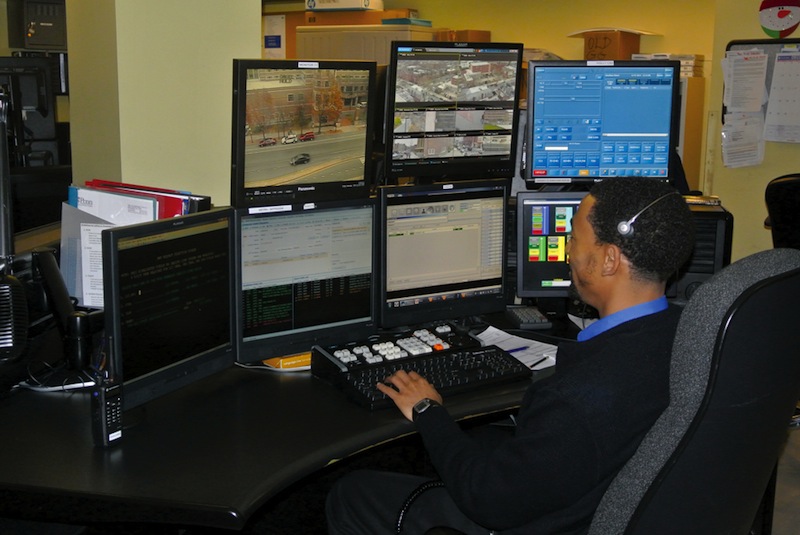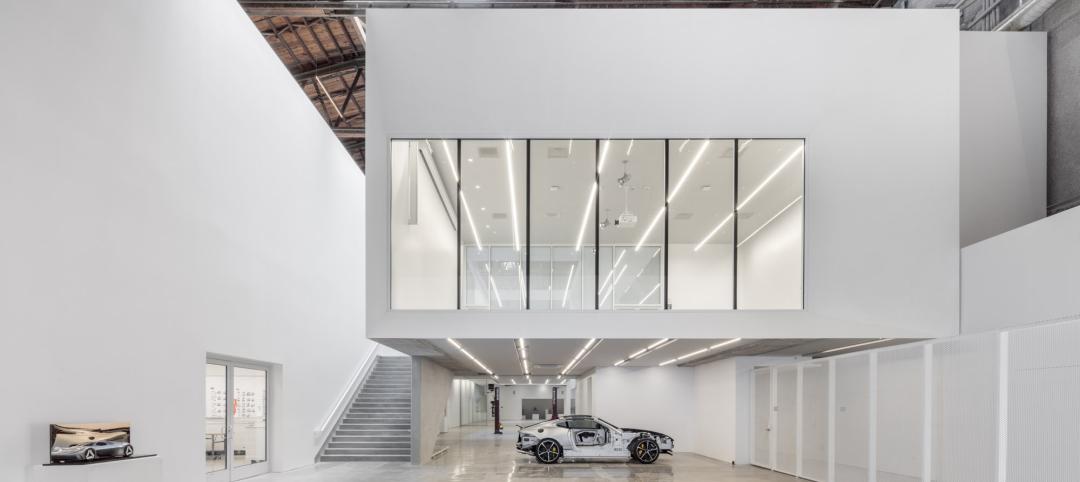In 1996, the University of Pennsylvania’s sprawling campus in Philadelphia was in the grip of an unprecedented crime wave.
While other universities chose to wall themselves off from their surrounding neighborhoods, Penn’s administrators, led by then-President Judith Rodin, decided that such a strategy wouldn’t work for their 280-acre campus. “The notion back then was, ‘If West Philly goes down, Penn would go down with it,’” says University Architect David Hollenberg, AIA.
So Penn doubled down on its investment in public safety. More important, it launched initiatives that addressed quality of life and security issues as well as housing and economic development in the surrounding West Philadelphia neighborhood.
For more on university security, read BD+C's Special Report: "How security is influencing campus design and construction"
The results have been striking. Crime in the 2.5-square-mile Penn Patrol Zone—which stretches from 30th to 43rd Streets, and from Market to Baltimore Streets—was down 49% from 1997 through 2012, says Maureen Rush, Penn’s Vice President for Public Safety and Superintendent of Penn Police. The last fatal shooting close to campus occurred last April, outside a bar unaffiliated with the university. For eight consecutive years, Security magazine has ranked Penn first among colleges and universities for public safety.
One bonus, says Rush, is that “all this produced community relations that Penn did not have before.” The campus holds monthly town meetings that are regularly attended by 60–70 local residents and business owners.
In a recent interview with BD+C, Rush, Hollenberg, and Michael Dausch, Executive Director of Design and Construction Management for Penn’s Facilities and Real Estate Services department, recounted the steps Penn took to secure its campus.
 While other campuses were fencing themselves off from communities to thwart crime, the University of Pennsylvania created a public safety buffer zone beyond its campus into adjacent neighborhoods and formed security alliances with Philadelphia’s police force and other local colleges. Courtesy University of Pennsylvania
While other campuses were fencing themselves off from communities to thwart crime, the University of Pennsylvania created a public safety buffer zone beyond its campus into adjacent neighborhoods and formed security alliances with Philadelphia’s police force and other local colleges. Courtesy University of Pennsylvania
In 1996, the university hired 19 new police officers, installed 102 new blue light phones, and integrated its policing strategy with that of the Philadelphia police force. (The Daily Pennsylvanian reports that Penn spent $7 million on these actions alone.) Penn’s 180-building campus now has over 500 emergency phones and 116 sworn officers, according to its 2014 Annual Security and First Safety Report, which covers 2011 to 2013. Its PennComm Communications Center processes over 106,000 calls a year, including Walking Escort requests.
The university beefed up its security presence in 1996 by contracting with Allied Barton Security, which stations officers around the campus. (There are now more than 550 guards on site.) Penn created a buffer zone beyond the campus’s patrolled area, which is supported by safety “ambassadors” who escort students and faculty to their cars and homes. This University City District includes security and communications partnerships with nearby Drexel University and the University of the Sciences.
But policing alone could not be the only answer to Penn’s crime problems, says Rush. Equally critical was the introduction of its West Philadelphia Initiatives, which focused on making surrounding neighborhoods safer and better places in which to live and work.
Those initiatives, says Hollenberg, included mortgage assistance programs for graduate students and faculty; the construction of a K-8 school, which Penn continues to support financially with a per-student donation of about $1,300 a year; and a $140 million investment in commercial development that drew retail stores and groceries to the community.
Penn is still improving its campus security. Rush says the university is in the midst of “Operation Building Safe,” a university-wide communications system that includes “virtual concierges”—a video camera/intercom combination that allows Public Safety to remotely verify the identity of a person seeking entry to a building.
Rush’s department also oversees “Penn Ready,” an emergency preparedness and notification program that includes SMS and email messages, and 29 discrete sirens placed around campus for alerts. The ultimate goal: emergency lockdown capability, via Public Safety control of every door on campus. “We’re moving toward that,” she says.
Related Stories
University Buildings | Aug 12, 2024
Planning for growing computer science programs
Driven by emerging AI developments and digital transformation in the business world, university computer science programs are projected to grow by nearly 15% by 2030.
Education Facilities | Aug 4, 2024
A former supersonic wind tunnel becomes a new educational facility for transportation design
The Mullin Transportation Design Center at ArtCenter College of Design in Pasadena, Calif., provides access for full-scale vehicular models, replicating a professional design studio.
University Buildings | Aug 1, 2024
UC Riverside’s student health center provides an environment on par with major medical centers
The University of California, Riverside's new Student Health and Counseling Center (SHCC) provides a holistic approach to wellness for students throughout the UC Riverside campus. Designed by HGA and delivered through a design-build partnership with Turner Construction Company, SHCC provides healthcare offerings in an environment on par with major medical centers.
Student Housing | Jul 31, 2024
The University of Michigan addresses a decades-long student housing shortage with a new housing-dining facility
The University of Michigan has faced a decades-long shortage of on-campus student housing. In a couple of years, the situation should significantly improve with the addition of a new residential community on Central Campus in Ann Arbor, Mich. The University of Michigan has engaged American Campus Communities in a public-private partnership to lead the development of the environmentally sustainable living-learning student community.
Adaptive Reuse | Jul 30, 2024
Empty mall to be converted to UCLA Research Park
UCLA recently acquired a former mall that it will convert into the UCLA Research Park that will house the California Institute for Immunology and Immunotherapy at UCLA and the UCLA Center for Quantum Science and Engineering, as well as programs across other disciplines. The 700,000-sf property, formerly the Westside Pavilion shopping mall, is two miles from the university’s main Westwood campus. Google, which previously leased part of the property, helped enable and support UCLA’s acquisition.
Smart Buildings | Jul 25, 2024
A Swiss startup devises an intelligent photovoltaic façade that tracks and moves with the sun
Zurich Soft Robotics says Solskin can reduce building energy consumption by up to 80% while producing up to 40% more electricity than comparable façade systems.
Great Solutions | Jul 23, 2024
41 Great Solutions for architects, engineers, and contractors
AI ChatBots, ambient computing, floating MRIs, low-carbon cement, sunshine on demand, next-generation top-down construction. These and 35 other innovations make up our 2024 Great Solutions Report, which highlights fresh ideas and innovations from leading architecture, engineering, and construction firms.
University Buildings | Jul 17, 2024
University of Louisville Student Success Building will be new heart of engineering program
A new Student Success Building will serve as the heart of the newly designed University of Louisville’s J.B. Speed School of Engineering. The 115,000-sf structure will greatly increase lab space and consolidate student services to one location.
University Buildings | Jul 11, 2024
3 considerations for designing healthy, adaptable student dining
Amanda Vigneau, IIDA, NCDIQ, LEED ID+C, Director, Shepley Bulfinch, shares three ways student dining facilities have evolved to match changes in student life.
Laboratories | Jul 3, 2024
New science, old buildings: Renovating for efficiency, flexibility, and connection
What does the research space of the future look like? And can it be housed in older buildings—or does it require new construction?

















